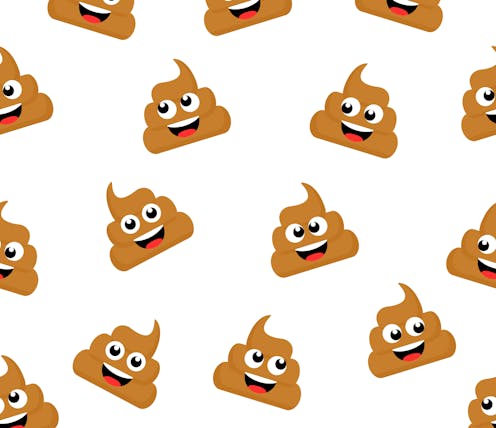Why is my poop brown?
- Written by Hannibal Person, Assistant Professor of Gastroenterology and Hepatology, School of Medicine, University of Washington

Poop, of course, isn’t always brown. It can be a different color, depending on what you eat and how fast the stuff moves through your system.
I’m a doctor who regularly treats children with digestive problems[10]. Some of them have diarrhea[11] – that is, liquid poop. It can be green or yellow because it contains a lot of bile.
When poop moves too quickly through your body, the bilirubin in the bile does not have enough time to be broken down to form stercobilin, which would make it browner.
If you eat a lot of something, especially if it’s hard for your body to quickly digest, your poop may look funny. For some people, eating beets leads to red poop or reddish urine[12].
Your body can’t possibly absorb everything that you eat and drink. Some foods, like corn kernels, can’t be fully digested by people. They may even come out in poop looking the same size and color as when you ate them.
Even though it may seem gross, I recommend that you regularly peek at your poop before flushing to make sure it’s brown and squishy. If most of it is an unusual color, such as black or white, it could be a sign you need to see a doctor. The same goes for having poop that is too hard or too runny. If your poop is red and you haven’t been eating beets, that might also be cause for concern.
Hello, curious kids! Do you have a question you’d like an expert to answer? Ask an adult to send your question to CuriousKidsUS@theconversation.com[13]. Please tell us your name, age and the city where you live.
And since curiosity has no age limit – adults, let us know what you’re wondering, too. We won’t be able to answer every question, but we will do our best.
References
- ^ Curious Kids (theconversation.com)
- ^ curiouskidsus@theconversation.com (theconversation.com)
- ^ food your body didn’t digest (doi.org)
- ^ stercobilin (doi.org)
- ^ hemoglobin (www.mayoclinic.org)
- ^ Red blood cells (www.urmc.rochester.edu)
- ^ bilirubin (www.mayoclinic.org)
- ^ form of bile (www.verywellhealth.com)
- ^ Veronika Zakharova/Science Photo Library via Getty Images (www.gettyimages.com)
- ^ children with digestive problems (scholar.google.com)
- ^ diarrhea (www.mayoclinic.org)
- ^ red poop or reddish urine (www.medicalnewstoday.com)
- ^ CuriousKidsUS@theconversation.com (theconversation.com)
Read more https://theconversation.com/why-is-my-poop-brown-171346

















